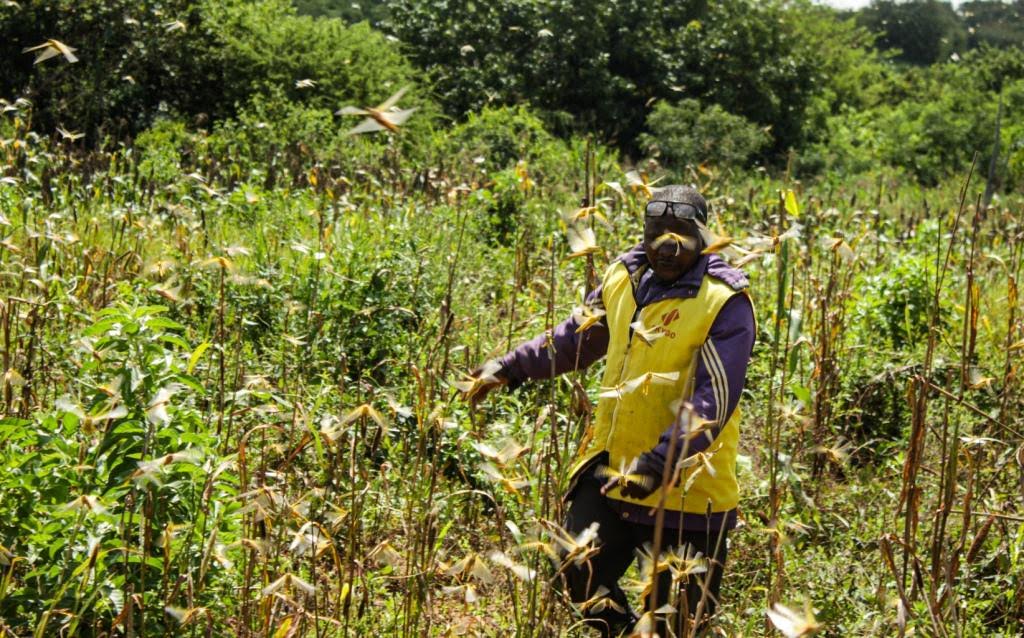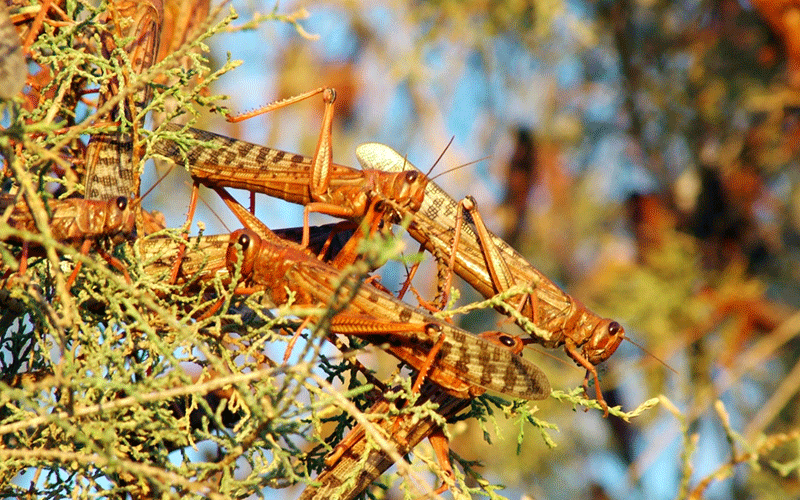Scientists raise red alert over desert locust invasion

Bernard Gitau and Dorcas Mbatia and KNA
Scientists yesterday raised the red alert over impending invasion of the country by desert locust unless immediate and urgent measures are taken to avert the threat.
The ravenous insects, which can decimate acres of crop and vegetation in hours, first landed in Wajir before quickly spreading to Mandera, Marsabit and Isiolo counties leaving utter devastation in their wake — and by yesterday, they were fast approaching Meru county.
Panic has gripped miraa farmers in Laare and Mutuati areas which are directly on the path of the destructive insects and which are said to have descended on Igembe North, are keeping their fingers crossed praying the government goes to their rescue fast.
Yesterday, meeting under the aegis of the Entomologist Society of Kenya (ESK), the experts urged the government and other stakeholders to contain the locusts, which pose a food security threat.
Lobby chairman Muo Kasina, who spoke to the media at the National Museums of Kenya (NMK), Nairobi, warned that the locusts should not be underrated because of their numbers and the high rate of invasion.
“Let us not scare away the insects, but manage them in the area. This will minimise the damage to the plantation,” he said.
According to miraa and other crop farmers, the locusts have invaded Ndumuru, Kinaduba and Kinameru areas in Meru. They said there seems to be no help in sight. A miraa farmer, John Mwenda, who spoke to the People Daily, said they are staring at massive losses unless the deadly insects are stopped.
Former Igembe MP Joseph Muturia, who is also a miraa farmer, warned that unless the locusts are contained in the next 48 hours, they will spread to Mutuati, Laare and Kangeta areas that are 10 kilometres apart.
According to Dr John Nderitu, an Entomologist from University of Nairobi, the swam of locusts can move a maximum of 200kms a day.
“If the area they have invaded does not have enough vegetation, they move hence there is a need to contain them from invading other areas,” he said.
“They are increasing in numbers day by day and they are all overfeeding on scrubs and euphorbia tree. They should be contained as a matter of urgency before attacking food crops,” said Ndumuru area chief Romano Muchiri.
Meru county Agriculture executive officer Carol Mutiga visited the area but assured that Crop Protection department and Locust Control Committee will deploy aerial spraying to contain the insect.
In Isiolo, livestock keepers and farmers are worried following the spotting of swarms of desert locusts in some parts of the area on Wednesday.
The pastoralists from Garbatulla and Merti sub-counties in Isiolo have expressed fear that the dreaded pests may spread and cause destruction to crops and vegetation if not contained immediately.
Wabera MCA Abdi Duba has appealed to the National government to move fast and help Isiolo residents in dealing with the locusts, saying the county government does not have the capacity to get rid of the destructive pests.
Necessary support
Busia Deputy Governor Moses Mulomi, who is also an entomologist, urged the national government to give the organisation handling locust invasion in the North Eastern region the necessary support.
Dr George Ong’amo from ESK said female locusts lay three batches of eggs in their two months’ lifespan translating to 300 eggs. He advised the government and other agencies dealing with locusts control to target breeding sites.
On Saturday, the government started aerial spraying in three counties in the country’s north to try to head off a locust invasion.
Meanwhile, Dr Esther Kioko from the National Museums of Kenya said the insects are edible.
“They are edible, therefore, let us innovate ways of harvesting them, dry them and store them. They are a great source of protein,” she said.












